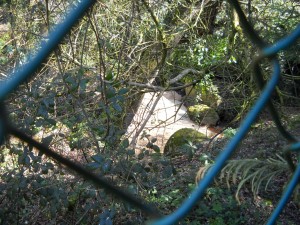The QUILLIVARON tributary flowing downstream of the outfall of a plant treating effluent from a slaughterhouse was polluted by yellowish foam over the stream’s width and a 3 to 4-m length. No fatality on aquatic life were observed. The plant operator was alerted by a neighbouring town hall and Police Force.
This incident was caused by a denitrification problem occurring in the plant’s biological reactor. The operator immediately modified the facility’s aeration conditions and proceeded by setting the treatment plant as a close-loop. An on-site inspection was conducted the next day by the inspection authorities for classified facilities, and a laboratory was appointed to spot check the discharges. The inspection noted the following: an absence of effluent discharge in the vicinity of their measurement channel, an extensive presence of organic substance deposits in this channel, due to closed-circuit plant operations, and a no lack of effluent discharge in the natural environment around the outfall. Inspectors ordered the operator to clean the affected zone, with all floating substances being recovered and routed to the plant, which asked for assistance from the local sewer agency and a private consultant to solve the problem. While awaiting recommendations from these partners, effluent was discharged once again on 28th March at 9 am, with a grating installed at the discharge point and at the measurement channel outlet to trap any potential foam. The operator monitored the outlet point by controlling for the presence of foam and was forced to stop the discharge at 11 am due to non-compliant results. Treated effluent was then discharged into the sludge storage basin, as closed-circuit plant operations had raised the levels of NO3- and NH4+ parameters. The plant remained in denitrification phase until 31st March. On 2nd April, the operator spread a portion of the non-compliant treated effluent (1,000 m³) onto parcels included in the sewage sludge spreading plan, without first notifying the inspectorate. The results of analyses performed at the time of the spot check revealed excessive levels of chemical oxygen demand and suspended solids compared to the values set in operating permit documents. Based on these observations (non-compliant discharges, unauthorised plant restart on 28th March, etc.), the inspectorate asked the Prefect to issue an injunction.
The solution ultimately selected was to drain and spread the plant’s sewage sludge and then re-seed using the sludge from another treatment plant. With this step proving successful, the plant was again operational on 13th April, which authorised the resumption of effluent discharge into the environment.




